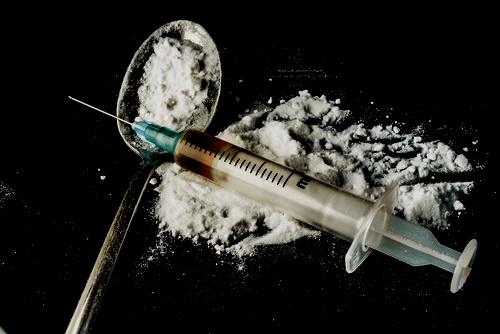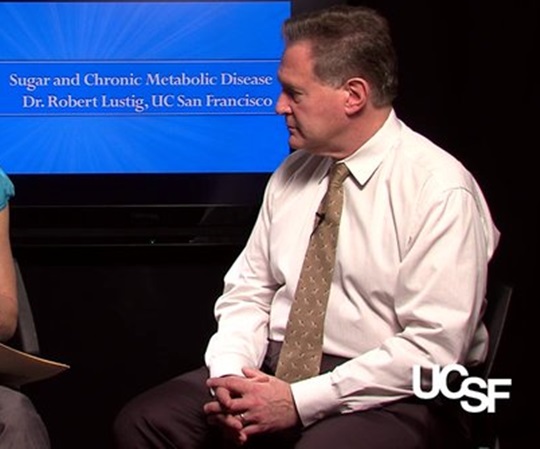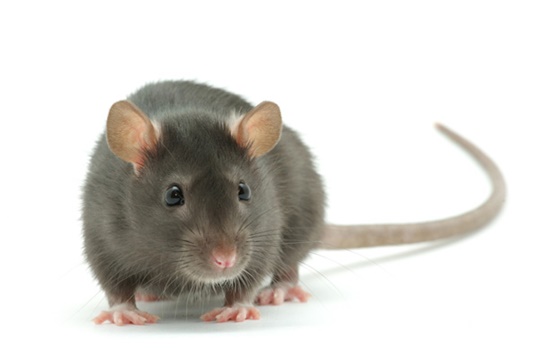
Hey everyone,
for the last couple of weeks I’ve been suffering a debilitating condition which scientists refer to as SWS (Spain Withdrawal Syndrome). This is a serious malady that afflicts people returning from Spain to locations where the mountains are way smaller, stunning girls are much rarer, and a bottle of anise costs AU $50.00 instead of a mere €7.50.
Symptoms include talking to your dog in Spanish, repeatedly asking for Alhambra at local Bottle-O outlets despite already knowing the answer in advance (“Alarm Bra beer?!? Nah, neva ‘erd of it, mate!”), daydreaming about cycling on the right hand side of the road, and walking down the street cheerfully exclaiming “Hola, ¿cómo estás?!” to blank-faced strangers who have absolutely no idea what you’re talking about and simply look back at you like you’ve just stepped off a spaceship.
Yeah, it’s tough folks, it’s really tough … but I’m dealing with it.
One day at a time.
Recommended treatments include plenty of fluids, churros, paella, and attending AC/DC concerts. One website I consulted also recommended letting go of past gripes, so … Penélope Cruz, if you’re reading this, I forgive you for dating that Tom Cruise nutter.ǂ
Wait, who am I kidding … the guy’s a loon. Seriously, what the hell were you thinking?
 The scary thing is he doesn’t even drink alcohol.
The scary thing is he doesn’t even drink alcohol.
Um, anyways …
Part of my post-Spain therapy also involves immersing myself in writing. Which kind of works out well, because I have two new books requiring completion, and the amount of progress I made on these books while sipping espressos on Passeig de Gracia was, well … not a lot.
Okay, not any.
And so here I am, playing catch-up and researching my butt off. And one of the things I’ve been researching is sugar, as this highly topical substance will be discussed in my new books. And as I’ve been searching around the Internet, pulling up articles and studies on the subject, there’s one name that just keeps popping up time and time again.
Yep…
Robert H. Lustig.
Americans Invented Pasta (!): The World According to Robert H Lustig.
In the bizarro world of low-carb gurus, if you come up with some wild notion that would provide great support for your anti-carb beliefs - if only it were true - then guess what?
It is true! Just go ahead and believe it, conflicting evidence be damned!
Hence we have folks like David Perlmutter, author of Grain Brain, and Gary Taubes, author of much unbridled bullshit, both claiming in their books that Americans ate low-carb diets one hundred years ago. Never mind that US food consumption data and the entire history of US agriculture shows the exact opposite. Nope, in Taubes’ and Perlmutter’s worldview, Americans of yesteryear were cultivating all those grain fields, not for sustenance, but purely for shits and giggles.
Then there’s the late Barry Groves, who claimed former Olympic marathoner Mamo Wolde ate a ketogenic diet and set a new world record that hasn’t been beaten since. Only problem is, it wasn’t a new world record, and his time has been repeatedly beaten since. And there is absolutely no evidence Wolde ate a ketogenic diet. In fact, runners from his parts have been documented to eat very high carbohydrate diets. So where did Groves get this fanciful version of events?
He simply made it up.
As he did the following quote:
‘On a high-fat diet, 4703 to 8471 excess calories were required for each kilogram of added weight. On a low fat VLCD [very low calorie diet], replacing fat calories with 8g/day of equivalent carbohydrate calories reduced weight loss by 1.68kg, corresponding to 3300 calories of carbohydrate/kilogram, possibly 2500 calories per kilogram for carbohydrate alone.'”
After posting this passage, Groves then went on to claim these figures demonstrated a significantly higher amount of calories was required from dietary fat than from carbohydrates to induce the deposition of body fat.
Groves referenced this quote to a 1975 NIH publication titled Obesity in Perspective. When I emailed Groves and told him that quote was nowhere to be seen in the NIH publication, he nonchalantly replied that he’d made it up, by mixing and matching stats from that paper and another appearing in an entirely different journal (the American Journal of Clinical Nutrition)!
Sweet Jesus…
I have pointed out numerous times over the last decade that this quote was made up by Groves, yet you still see it quoted all over the Internet by low-carbers. Hey, why let a little thing like reality get in the way of a good piece of supportive copy?
And now we have Robert Lustig, continuing this shonky tradition in fine form.
Check out this IQ-destroying exchange in a 2012 interview with Alec Baldwin:
“Robert Lustig: There is no pasta in the Mediterranean diet. We started the pasta craze because of all the immigrant Italians who couldn’t afford to eat meat and vegetables here, that’s what they fell back on -
Alec Baldwin: Right.
Robert Lustig: - and it actually got exported from here back to Italy, same as chop suey did to China. You know these are all American inventions. So the fact is that the Italian diet is not the Mediterranean diet, never was, never will be.”
Wow.
Next Lustig will be telling us Italy invented Coca Cola!
For the record, not only was pasta invented long before Italians migrated to America, it was invented long before Christopher Columbus even discovered America!
No-one knows exactly when the very first bowl of pasta was served up, but the most accepted theory is that the Arab invasions of the 8th Century brought a dried noodle-like product to Sicily. This early pasta was made using flour from durum wheat, which Sicily specialised in. Under Italian law, dry pasta can only be made from this type of wheat (as with their coffee, Italians take their pasta very, very seriously).
According to John Dickie, professor in Italian Studies at University College London and author of Delizia!: The Epic History of the Italians and Their Food, the first reference to pasta in Italy was noted in 1154 and it was about an export factory in Sicily.
He says its breakthrough as a common food came in Naples in the 1700s, when it was recognised as "a good way to feed a large part of the populace".
It wasn't until large-scale Italian immigration to the New World in the 20th century that pasta became popular outside of Italy.
In other words, Italians introduced pasta to America, not the other way around.
Stop making shit up, Robert.

Sophia Loren: “Everything you see I owe to pasta.”
 Robert Lustig: “Everything you see I owe to my stubborn refusal to accept the reality of calories in versus calories out.”
Robert Lustig: “Everything you see I owe to my stubborn refusal to accept the reality of calories in versus calories out.”
Lustig’s foray into fantasyland hardly begins and ends with the ridiculous claim that pasta was invented by Americans in order to nourish poor Italian immigrants. Wait until you hear what he’s been saying about sugar, alcohol, cigarettes, and cocaine…
Sugar: The New Scapegoat for Obesity, Diabetes, Fatty Liver, and Pretty Much Everything Bad that Ever Happened to the Human Species
While we don our bullshit-proof vests in order to survive Lustig’s full frontal assault on human intelligence, let’s get a little nomenclature sorted out.
Fructose is a monosaccharide that occurs naturally, most notably in fruits and cane and beet sugar. The latter, as we all know, are processed to obtain sucrose (aka table sugar), which is a disaccharide compound containing fructose and another monosaccharide, glucose.
Then there’s high fructose corn syrup (HCFS). A sweetener made from corn starch, it undergoes processing to convert some of the starch's glucose into fructose. The exact fructose content of HFCS varies: HFCS 55 (around 55% fructose if the water was removed) is used mostly in soft drinks, while HFCS 42 is used in other beverages, processed foods, and baked goods. Much ado is made about its high fructose content, but in reality HFCS has a similar fructose content to sucrose. Not surprisingly, there is no scientific evidence to support incessant claims that HFCS is more fattening than other sugars (stop hyperventilating all you anti-fructose zealots, I’ll discuss the evidence for this in Part 2. Take your blood pressure pills and sit back down).
Despite this, yours truly personally avoids HFCS, but not for any of the reasons incessantly cited by the anti-sugar crowd (obesity, fatty liver, metabolic syndrome, spontaneous human combustion, yadyadayada). Rather, it undergoes processing involving heavy metals and toxic chemicals that I don’t want anywhere in, on, or near my person (see footnote ** for more info).
Anyways, now that we’ve got the nomenclature sorted, let’s get back to Lustig.
In a 2012 Nature article, the highly imaginative paediatrician likened fructose to alcohol, claiming excessive consumption of both caused obesity, hypertension, fatty liver, and insulin resistance[1].
Consuming any source of calories in excess leads to overweight and obesity. And becoming overweight in turn greatly raises the risk of hypertension, fatty liver, and insulin resistance[2,3]. The best non-drug ways to reverse this unhealthy turn of events is weight loss and exercise[2].
Of course, the anti-carb crowd don’t like exercise. Too much hard work. They’d rather sit on their dimpled butts and wait expectantly for some imaginary “metabolic advantage” to come galloping in like a white knight in shining armour, slaying all their unsightly flab in one fell swoop, leaving them lean as an athlete without ever having to get out of their chair and sweat.
Keep dreaming waiting, my friends.
In a 2013 issue of Advances in Nutrition, Lustig published another gem titled “Fructose: It’s Alcohol Without the Buzz”[4]. Sounding more like a corny advertising slogan than the heading of a peer-reviewed paper, the title seems to miss a crucial point: It’s the “buzz” that makes excessive alcohol consumption so enticing, which in turn leads to intoxication and its well-documented devastating health and social consequences. Fructose does not produce an inebriated “buzz”, and nor does it cause domestic violence, road fatalities, bar fights, ill-thought and unprotected casual sex encounters, or even painful hangovers the day after consumption.

"Wine: It's Alcohol With the Buzz!"
Not be deterred, Lustig promptly pushed the boundaries of credulity even further, this time likening sugar not just to alcohol, but also cigarettes. Lustig claimed sugar should be regulated just like the aforementioned, because:
“Well, sugar meets the same criteria of ubiquity, toxicity, abuse and negative impact on society that tobacco and alcohol also achieve.”[5]
And as if all that isn’t enough, Lustig has publicly claimed sugar is just as addictive as cocaine[6]. His main platform for this outrageous claim is that in MRI scans, sugar activates the same “pleasure centres” of the brain as cocaine.
Indeed it does … but so does a vast array of other activities, such as receiving money after correctly completing a task, getting a pleasant surprise, looking at attractive curvaceous females, having sex, viewing humorous cartoons, being shown pictures of your romantic partner, and even learning a new language![7-13] Just because different activities activate similar dopaminergic pathways and the mesolimbic area in the brain, does not even begin to mean they exert similar physiological effects. Hey, I enjoy learning and practising Spanish, but wouldn’t even begin to compare it to sex, and I’m guessing most bilingual folks with healthy hormone levels would concur.
By the way, eating dietary fat also lights up our brain’s “pleasure centres”, as does consuming chocolate and high-calorie foods (both high in fat)[14,15]. In fact, Oxford researchers Ivan de Araujo and Edmund Rolls compared the effects of dietary fat and sucrose consumption by healthy adults in the same series of experiments, and found both lit up the same brain areas to a similar degree – and that was despite using a tasteless and odourless fat source (they were more concerned with examining the neurological effect of fat viscosity, rather than taste and smell)[16]
In the research examining food preference and weight status, many reports have failed to link a “sweet tooth” with being overweight or obese; far stronger is the link between obesity and having a preference for dietary fat and/or foods rich in both fat and sugar[17]. It’s no big secret that fat and sugar together make a particularly tasty combination, and many of our most notable calorie-rich treats therefore contain both. But despite its well-known palatability, caloric density and its increased consumption alongside dietary carbohydrate over the last several decades, Lustig has nothing to say about it. As with his similarly myopic low-carb cohorts, the fact that excess dietary fat also contributes to obesity and ill-health doesn’t compliment his vocal anti-carbohydrate stance. Whether he thus subconsciously or even deliberately ignores this contradictory research, or is truly unware of it, I can’t say. Neither of the aforementioned possibilities, however, inspire confidence in his research efforts and conclusions. Nor does his penchant for hyperbolic exaggeration and disingenuous analogies that extend all the way to (very selectively) comparing sugar to drugs like alcohol, nicotine and even cocaine.
Lustig and his like-minded cohorts , of course, insist their fanciful sugar-equals-narcotics claims are not an exaggeration, and as evidence are fond of citing research that used rats – not humans – as the subjects. In one of these studies, French researchers reported that when rats were allowed to choose between water sweetened with sugar, saccharin or intravenous cocaine, over 90% preferred the sucrose-enhanced water to cocaine[18]. Because a similar proportion of rats preferred calorie-free saccharin, many commentators have assumed it was the sweetness and not caloric content of the two mixtures that the rats found so “addictive”.
But is that really what was going on? Along with self-preservation and replication, the search for calories is one of the most powerful motivators of animal behaviour. Just because saccharin is calorie-free doesn’t mean the rats weren’t after calories when they drank it in preference to scoring cocaine: After all, the rats didn’t know saccharin was calorie-free, and its sweet taste would’ve indicated it was indeed a source of caloric energy. Of course, the only way to test this possibility is to have included other non-sweet food items in the study, which the researchers didn’t do. But another group of researchers did, and we’ll discuss their results in a moment.
In another study, it was claimed rats frequented the side of a maze where they were given Oreos to the same extent as the side of the maze where they were given an injection of cocaine or morphine. Furthermore, when the researchers “used immunohistochemistry to measure the expression of a protein called c-Fos, a marker of neuronal activation, in the nucleus accumbens, or the brain’s ‘pleasure center,’” they found that “the Oreos activated significantly more neurons than cocaine or morphine.”
In the widely cited Connecticut College press release for this unpublished study, neuroscientist Joseph Schroeder stated:
"Our research supports the theory that high-fat/high-sugar foods stimulate the brain in the same way that drugs do ... It may explain why some people can’t resist these foods despite the fact that they know they are bad for them."
And according to co-researcher Jamie Honohan, “Even though we associate significant health hazards in taking drugs like cocaine and morphine, high-fat/high-sugar foods may present even more of a danger because of their accessibility and affordability".[19]
Seriously? What about the majority of people who successfully manage to resist Oreos? If Oreos are truly more addictive than cocaine and morphine, yet are far more readily available and accessible, why aren’t the vast majority of us nursing “dangerous” Oreo addictions?
The Connecticut College study has not been peer-reviewed and published, yet enjoyed widespread press coverage. A subsequent study involving rats, drugs and Oreos that was peer-reviewed and published did not receive anywhere near the same kind of coverage, no doubt because its findings did not lend themselves to sensationalist headlines. In this study, researchers took three groups of rats and allowed them to spend time in empty compartments, or compartments containing Oreos, rice cakes or heroin. In the heroin arm of the study, 75-100% of the rats showed a preference for spending time in the heroin room (the results varied with increasing dosages). In the Oreos group, 69% of the rats preferred the Oreos room which, while not on a par with the heroin results, still indicated a strong preference for the sugar- and fat-rich biscuits. But guess what? A similar proportion of rats in the rice cake phase - 72% - demonstrated a preference for the rice cake room.
The results of this study support suspicions that rodent preferences for sucrose and saccharin in the French study above may have been more the result of sustenance-seeking rather than pleasure-seeking. Let’s face it, rice cakes – free of sugar and fat - are hardly the most palatable of foods, and the rats appeared to agree: When given infusions of either liquefied Oreos or rice cakes, the former elicited significantly more tongue protrusions than the latter[20]. Yet a similar proportion of Oreos and rice cake rats subsequently drifted to their respective food-containing rooms, which tells us assumptions from rodent experiments that sugar is as addictive as hard drugs like cocaine, heroin and morphine are probably overly simplistic, premature … and wrong.
One shortcoming of the above study is that it did not directly compare heroin, rice cakes and sugar with each other. But even if researchers one day do publish such an experiment in which the rats preferred sugar/fructose/Oreos/gelati/Chupa Chups/insert-whatever-the-heck-sweet-food-you-want-here – but not rice cakes - to cocaine or heroine, there is still one very major problem:
They’re rats, not humans!
Spot two or more differences between the above creatures? If so, congratulations – you’re smarter than many professional researchers! If not, don't despair - a long and lucrative career making idiotic analogies between sugar and hard drugs awaits you!
Rodent studies are notorious for producing results that cannot be replicated in human beings. For example, did you know that if you take two groups of mice and give one group supplemental CLA, a fatty acid found in meat and milk fat, then that group will turn into a bunch of buffed and shredded little mofos? The difference between the two groups is striking – CLA induces massive body fat reductions of 60-80%.
Based on these rodent results, CLA supplements promptly became a hit among bodybuilders, only to fizzle out a short time later.
Why?
Because CLA simply does not have the same effect in humans. Study after study has shown the fat loss effects of CLA in human volunteers to be either non-existent or negligible at best.
Oh, and one other thing: Not only do mice have an exaggerated response to CLA when compared to other species (rats, hamsters, pigs, humans), but they are also far more likely to develop fatty liver as a result. Which suggests all those fatty acids being liberated from adipose tissue overwhelm the mouse liver's ability to sufficiently increase fat oxidation.
This may came as a shocking surprise to many researchers and to folks like Lustig, but mice are not the same as humans.
No, really!
Then there’s the monumental wank known as the low-carb “metabolic advantage”. Years ago, low-carbers, led by a guy called Dr Michael Eades - who made millions telling people low-carb diets were the schnizzle for weight loss despite having to wear a girdle on TV because he was so fat - were fond of pointing to studies showing greater weight and fat loss in rodents on isocaloric ketogenic diets.
For some strange reason, they weren’t so fond of pointing to the studies in which rodents on ketogenic diets did not lose any extra fat or weight[21-23].
But no matter, because in tightly controlled ward studies with real live human beings, ketogenic diets have repeatedly failed to show greater weight or fat loss.
Extrapolating results from furry, four-legged creatures with a tail that weigh 250 grams to two-legged hominoids, without first bothering to validate those results in experiments with the latter, is stupid.
Truly, truly stupid.
Stop and think about this for a moment. If sugar was truly as or more addictive than illicit drugs, why do so many people risk fatal overdose and imprisonment to engage in the latter? If sugar really lit up the brain like cocaine and heroin, why on Earth do people resort to burglary, violent robbery and even prostitution to afford these drugs, when they could simply go to the supermarket and for a couple of dollars easily and legally buy a kilogram of pure, unadulterated sugar, guaranteed free of harmful fillers and cutting agents?
And has anyone really seen a person who has just removed sugar from their diet curled up on the ground, sweating and shaking in agony, as is par for the course among those in the midst of heroin withdrawal?
Seriously, do the people who promote this sugar = narcotics rubbish really believe in it? Do they honestly see no difference in allowing their kids to have an Oreo or a snort of cocaine? Between having a can of soda or a hit of heroin?
If so, then make no mistake: They’re completely fucking nuts.
On February 14, 2004, one of the world’s greatest and most amiable cyclists, Marco “Il Pirata” Pantani, was found dead in a Rimini hotel room. He was only 34. The cause of death was acute cocaine poisoning. Unlike a heroin overdose, there was no slipping off into a dreamy haze. Dying from a cocaine overdose is a very painful and nasty affair: Pantani would have suffered a massive heart attack and died in excruciating agony. I really, really wish he was bingeing on Oreos instead of cocaine that night. A big massive WAKE THE FUCK UP to all those terribly deluded alarmists who think table sugar is just as addictive and destructive as cocaine. That we have professional doctors and researchers who really believe this crap reveals a lot about why so many people are still completely clueless as to how to eat in a healthy and non-neurotic manner.

This is Douglas Glenn Colvin, better known as Dee Dee Ramone, bass player and songwriter for the greatest musical band ever to grace this planet: The Ramones. The popular and likeable Dee Dee was a long-time heroin user, and was found dead on June 5, 2002 by his wife Barbara. He was 50 years old. An autopsy established heroin overdose as the cause of death. Again, I really, really wish Dee Dee had chosen Oreos as his ‘drug’ of choice, instead of smack. If so, he’d still be with us today, and I could go see him and Marky Ramone playing Ramones covers at The Corner. But he’s not, and so I can’t. Tell me again how sugar is just as addictive and destructive as heroin?

This is Ramone, a most handsome creature named after the greatest musical band ever to grace this planet. I once accidentally dropped some sugar-rich candy on the ground … he promptly came over, sniffed it, licked it, then left it and strutted off, utterly unimpressed. However, Ramone has been known to become so frenzied at the sight and smell of meat, rice and vegetable mixtures that he’ll jump, spin, hyperventilate, and bolt straight through a fly screen door, knocking it right off its fixtures (Ramone, I really hate it when you do that). And don’t dare try moving his bowl while he’s in the middle of chomping down this mixture … he might just separate your hand from your wrist. Stay tuned for my new study titled "Home-Cooked Meals More Addictive than Sugar, Cocaine, Heroin, Morphine, Social Media and Watching 'If You are the One'", currently under peer review.
There is one addiction-like syndrome I’ve observed related to sugar, and that’s the anti-sugar crowd’s unshakable penchant for intelligence-insulting bullshit. Like a lot of extremists, it seems they just can’t help themselves.
Your Fat is Not Your Fault! Nor is Your Outrageous Gullibility!
So why do so many people fall for such nonsense?
One of the ways Lustig has been able to gain such a wide audience for his outlandish claims is to employ the old “your fat is not your fault!” routine. In the worldview of folks like Lustig, daring to tell an overweight person who wishes to lose weight they should exercise more and/or eat less (i.e., telling them the truth) is akin to calling them a “glutton and a sloth”. In his televised rants, Lustig repeats these two words with nauseating frequency, claiming overweight and obese people are routinely being told they are “gluttons” and “sloths”, even by their own doctors[5,24].
Despite having little basis in reality, this brand of polarizing hyperbole works a treat, because people love being told they are unfairly marginalized victims. Given the choice between having to admit they played a key role in their own problems – always a bitter pill to swallow – or being able to blame their misfortune on someone or something else, many people will instinctively choose the latter. Blaming others and portraying ourselves as hapless victims is always easier – at least in the short-term – and allows us to avoid discomforting introspection. Not to mention the unpleasant truths this introspection can reveal about ourselves, and the effort required to change for the better. Much easier to instead listen to folks like Lustig who blame obesity wholly on profiteering food manufacturers, the “Coca-Cola Conspiracy”, and misguided health authorities (certainly guilty of perpetuating misinformation, but ironically Lustig is repeating their great mistake, which was to overlook the fundamental role of overall caloric intake and expenditure and instead erroneously blame obesity on a single dietary component).
Also at fault, in Lustig’s view, are all those heartless sods who have been calling you a “glutton and a sloth” instead of acknowledging that overweight people are just innocent victims of an evil substance the ever-imaginative Lustig considers to be just as addictive as cocaine and socially destructive as alcohol.
Exactly who these accusatory commentators and especially insensitive doctors are, Lustig never reveals. Most likely, I suspect, because they don’t exist; while there are indeed some rude doctors, the overwhelming majority would never employ such tactless language when addressing their overweight patients. And folks like myself, who rightfully and unashamedly point to the science showing calories to be the final and indisputable arbiter of weight gain and loss, are simply stating the plain facts. Contrary to what Lustig wants you to believe, we’re not on some cruel, perverse mission to make overweight people feel worse than they already do. If you’re currently overweight, then whether it was due to “gluttony” or a far more modest calorie surplus that led to insidious weight gain, or whether it was due to “sloth” or to a schedule so busy and distracting that exercise found itself sliding further and further down your “to do” list, is not for me to say. I don’t know you, and therefore cannot even begin to make such a judgement call.
What I can say with the utmost certainty is that if you are currently overweight, then you got that way because there was an imbalance between your caloric intake and caloric expenditure; the former exceeded the latter long enough for you to gain excess weight. If you want to reverse the situation, then you need to create a caloric deficit (something you can learn how to do properly in The Fat Loss Bible).
Despite its rock solid scientific foundation, Lustig furiously rejects the calories-in-versus-calories-out paradigm. He parrots the low-carb promoters who erroneously claim it’s the type of calories you eat that determine whether you get fat, and that the caloric type responsible for overweight is carbohydrate. Lustig takes this anti-carbohydrate mantra further by claiming simple carbohydrates like fructose, high-fructose corn syrup and sucrose are the most fattening caloric sources of all.
In a 2013 interview that appeared on an Australian ‘science’ show, a clearly incensed Lustig asks:
“Did all of a sudden the entire world just become a bunch of gluttons and sloths? All at the same time? I mean, get real!”
When you watch the footage of this interview (available here), Lustig’s seething anger as he asks this hypothetical question is readily evident. He obviously harbours an extremely poor regard for those of us who maintain that an excess of calories caused the obesity 'epidemic'.
The only thing is, we’re right.
And, in an about-face, Lustig inadvertently acknowledges exactly that when he then complains:
“And now the food tastes great. In fact, it tastes so great we can't put it down. This is a win-win for the food industry. The complied with the arguments of the 1980s. They've gotten us to eat more, and they are making money hand over fist. The problem is - they're doing it at our expense, and we're losing our health.”[Bold emphasis added]
Lustig, who apparently believes food shouldn’t taste great (he’s clearly not of Mediterranean origin), then pulls another about-face, and switches back to anti-calorie mode:
“'Calories in, calories out' is how we got into this mess. It depends on where those calories come from, it depends on what those calories are, it depends on how those calories are metabolised, as to whether or not they will cause weight gain. When you burn protein for energy, it takes twice as much energy to metabolise that protein into energy as for carbohydrate. It's known as the 'thermic effect of food'. Those calories are not recoupable. So you actually burn more energy metabolising protein than you do carbohydrate.”
Lustig seems to be rather confused as to just what caused the obesity 'epidemic'. First he angrily scoffs at the notion that excess caloric intake caused the rise in obesity, then he admits we’ve indeed been eating more since the 1980s, then he goes back to dismissing the role of calories and claiming that it is carbohydrates that are fattening.
Lawdy, lawdy.
Let’s address Lustig’s incoherent claims one by one.
Firstly, no, the entire world did not become “gluttons” and “sloths” overnight. Lustig seems to forget that for much of the world’s population, starvation is still a much more pressing issue than no longer being able to fit into a pair of size 8 jeans. And among those populations that did go on to develop unprecedented levels of obesity, no-one ever said it happened overnight: Lustig’s hypothetical question is a classic strawman ploy. The obesity statistics clearly show a progressive increase over three decades in the number of obese folks[25,26], and this correlates nicely with food intake data showing an increase in caloric intake over the same time frame.
Secondly, Lustig’s claim that “'Calories in, calories out' is how we got into this mess” is complete and utter hogwash. A flippant disregard for “calories in” versus “calories out” is what got us into this “mess”. This flippancy was an unfortunate side effect of our health authorities’ myopic obsession with dietary fat, and despite being highly critical of these authorities, Lustig appears hell-bent on making sure we repeat the same mistake, only this time by myopically focusing on sugar instead of fat. He claims it’s not the amount of calories you consume and expend that matters, but the type of calories. And by doing so, blissfully demonstrates just how truly ignorant he is of the abundance of ward research showing this to be completely wrong. To top it all off, he parrots the low-carb glorification of protein as a thermic powerhouse, even though controlled research shows this effect to be minimal and that isocaloric diets higher in protein cause no extra weight loss.
Perhaps most bizarre of all is when Lustig complains that “now the food tastes great.” What, exactly, is he saying here? That food didn’t taste great prior to the 1980s? That he would prefer our food tastes bland, or even bad? Food is one of life’s great pleasures, and it damn well should taste great. Any assertion to the contrary reeks of the Spartan, self-depriving mentality that so many misguided health fanatics seem to believe is part and parcel of healthy eating. That this pervasive belief is not just wrong but in fact harmful to both physical and mental wellbeing is something we’ll explore far more closely in Part 2.
Also worrisome is when Lustig complains that the food industry has “gotten us to eat more.” Whoa, wait a minute. You could certainly make a strong argument that with incessant advertising, attractive packaging, and novel products, the food industry has swayed our perceptions and influenced us to eat more. But claiming they’ve “gotten” us to eat more suggests the food industry went beyond mere persuasion and somehow put the food right into our mouths. When considered along with Lustig’s incessant rambling about addiction, it’s clear he believes we’re all at the mercy of external forces, hapless sods all incapable of resisting the temptation of sweet, tasty foods. “I believe in victims, not perpetrators”, he says[5]. Except of course when it comes to the food industry; in Lustig’s eyes, it clearly is a major perpetrator.
And maybe, in a sense, it is. It ‘perpetrates’ catchy but often nonsensical advertising, and a pursuit of profits that may or may not be accompanied by a regard for possible public health outcomes. But it is a perpetrator who cannot force you to put a single morsel in your mouth. Unless you are an adult who for some strange reason allows others to spoon-feed you, then nothing enters your mouth that you didn’t put there yourself.
I will repeat: No food or drink enters your mouth that you didn’t put there yourself.
Regrettably, advertisers have been bullshitting us ever since there was advertising, and companies have been behaving badly ever since there were companies. And since at least the early 1960s, ‘respected’ health authorities have been getting just about everything spectacularly wrong when it comes to the primary prevention of conditions like heart disease and obesity.
But there comes a point when, having realized these entities often spout bollocks and get things wrong, that we have to step up and take responsibility for our own physical condition. We can accept that we’ve been uncritically following garbage advice, and instead smarten up and defer to what the actual science says and to what empirical history shows us, and move forward accordingly.
Or we can simply sit around and complain we are the victims of our “pleasure centres”, of “addiction”, of a vast “Coca Cola Conspiracy” that allegedly paralyses our free will. We can convince ourselves these forces are so powerful they render us all helpless victims and we therefore need Big Government to come along and rescue us, to make everything alright again by using its powers of force to impose new taxes and restrictions on sugar (as Lustig is demanding), even if wasn’t actually sugar that made us fat.
In other words, we all have a choice:
-Act like grown-ups, accept responsibility for our own actions, and vow to abide by physiological reality from this day on as best we can, or;
-Act like petulant little children who refuse to accept our own excesses led to our present condition, and instead angrily blame someone or something else, while simultaneously expecting someone else to do something about it.
If his physical condition is anything to go by, Robert Lustig appears to have opted for the second strategy. Every photograph and every piece of video/TV footage I’ve seen of Lustig shows him sporting a major gut. As I wrote in a recent article, this would be irrelevant if his field of expertise was accounting or engineering, but for an individual who positions himself as an expert health commentator and vigorously blames sugar for the obesity epidemic, it speaks volumes. If sugar really is the cause of obesity, then Robert clearly isn’t following his own advice. But if he is avoiding sugar, then he’s simply living proof that too many calories and/or not enough physical activity are the true causes of overweight.
The irony is even bigger than his waistline. Like his low-carb cohorts Jimmy Moore, Gary Taubes, the girdle-wearing Michael Eades and the late Robert Atkins, Lustig loudly proclaims to know the cause of the obesity epidemic and smugly ridicules those who disagree with him, all the while sporting a clearly oversized midsection.
These folks refuse to acknowledge scientific reality, and while they’ve perversely made a lot of money doing so, they are nonetheless paying the physical price for it.
Don’t you do the same.
In Part 2, we’ll look at the evidence that clearly shows sugar does not and cannot induce weight gain independent of its caloric content. I'll also share with you what I consider to be one of the most important dietary studies of all time. Chances are you’ve never heard of this study, but don’t worry, come next week you’ll know all about it. And you’ll begin to realize why the country that is most obsessed about diet and health, a country from which the overwhelming majority of diet gurus and bullshit health fads emanate, ranks so poorly on the healthy and longevity charts. Meanwhile, you’ll learn about a country where the people view food as a source of pleasure and don’t give a shit about “eating for health”, yet nonetheless eat healthier, live longer, and have far lower rates of obesity and heart disease!
Stay tuned folks…
—
If You Enjoyed this Post, Please Consider Sending a Tip
I post on my own time and at my own expense. I don't receive a cent from industry, philanthropic or NGO organizations. Researching and writing articles like this takes a lot of time, so any and all tips are greatly appreciated.



